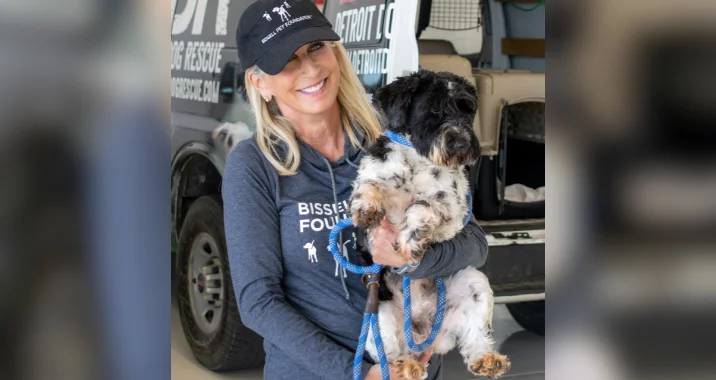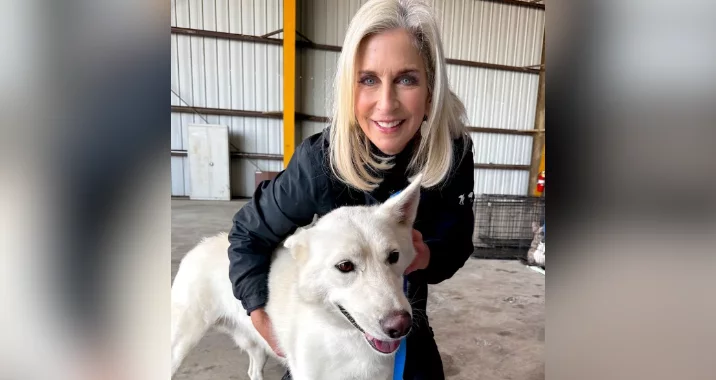The Lifesaving Benefits of Responsible Pet Transport
Transporting homeless pets from overwhelmed shelters to communities with greater adoption opportunities remains one of the most powerful tools in animal welfare. At BISSELL Pet Foundation (BPF), our routine and crisis-response transport program gave more than 5,000 pets the second chance they deserved in 2024, and 2025 is off to a strong start.
When done responsibly, transport saves incoming pets and supports those already waiting in destination shelters. By diversifying the pet population, transports increase foot traffic and visibility, boosting adoptions across the board. Our partner shelters consistently report that transports benefit pets already in their care by attracting more adopters.
The positives of pet transport continue to outweigh the negatives, which sometimes may include lengthy travel for pets, expensive medical testing, and complicated logistics. With proper planning, pets remain safe and comfortable during transit.
Success Begins with the Source Shelter/Organization
When initiating a transport, the first rule for source shelters or source organizations is careful screening and vetting of the receiving rescue or shelter—both before and after the transport. Do they have the space to care for the animals? Do they have the capability to place the pets in great homes? BPF’s Animal Incident Management® team has been called into numerous cruelty and neglect cases where well-intentioned rescues became overwhelmed after receiving too many animals. Without accountability and oversight, even good intentions can lead to suffering. A strong vetting process is not optional—it is essential, and it is the source shelter/organization’s responsibility.
Understanding Local Needs
Both source and destination shelters must understand local adoption trends and ensure the community has strong adoption options. On the source side, if a pet can be adopted locally, it should not endure a long transport. At the same time, a shelter might consider exchanging pets with another in-state organization to diversify their population or help their pets be seen by a different set of adopters. Many shelters now use intrastate transport (relocating pets to nearby shelters) to increase exposure and diversity while keeping pets close to home—it’s quicker, more affordable, and still lifesaving.
Destination shelters should prioritize nearby shelters before bringing in pets from out of state. That said, exceptions exist. Bringing in pets not typically available locally, such as when BPF transports pets from commercial breeder surrenders, or our routine transports that bring in animals to help diversify the shelter population. With BPF transports, shelters with space can select pets from our online platform, representing multiple source shelters from a region, who are trusted and vetted BPF partners. They have the freedom to select pets that will appeal to their community and diversify the shelter population, so they have the variety to draw community interest and increase adoptions. A family might come looking for the doodle they saw online and leave with a lab mix who was already in the shelter. We want to make sure the community sees their local shelter as a place where they can find a diverse population of healthy, desirable pets of every size, that changes daily, so they don’t buy from online platforms or pet stores that promote a cycle of cruelty.
Transport as Crisis Response
Sometimes transport is more than a tool—it’s the only option. On an average day in Riverside County Animal Control, the shelter houses more than 800 dogs. BPF worked with them to select large, long-stay dogs and staff favorites who were not thriving at the shelter. Those dogs were flown to Michigan and were quickly adopted, which was an outcome unlikely without transport. Crisis-response transports save lives and engage the public, reminding us all of our ability to help.
Best Practices Save Lives
If you are with a shelter that participates in transport, follow best practices to optimize outcomes. Always consider the individual needs of pets, your community’s capacity, and long-term success. The Association for Animal Welfare Advancement offers a helpful resource here: Companion Animal Transport Model Practice.
If you are looking to adopt, visit your local shelter regularly as the population changes daily.
Long-Term Solutions Start with Prevention
Responsible transport provides urgent relief, but prevention is the real long-term solution. That’s why BPF is focused on our Fix the Future® spay/neuter program—to address the root causes of pet homelessness and create lasting change in communities nationwide.
Until every pet has a home,



